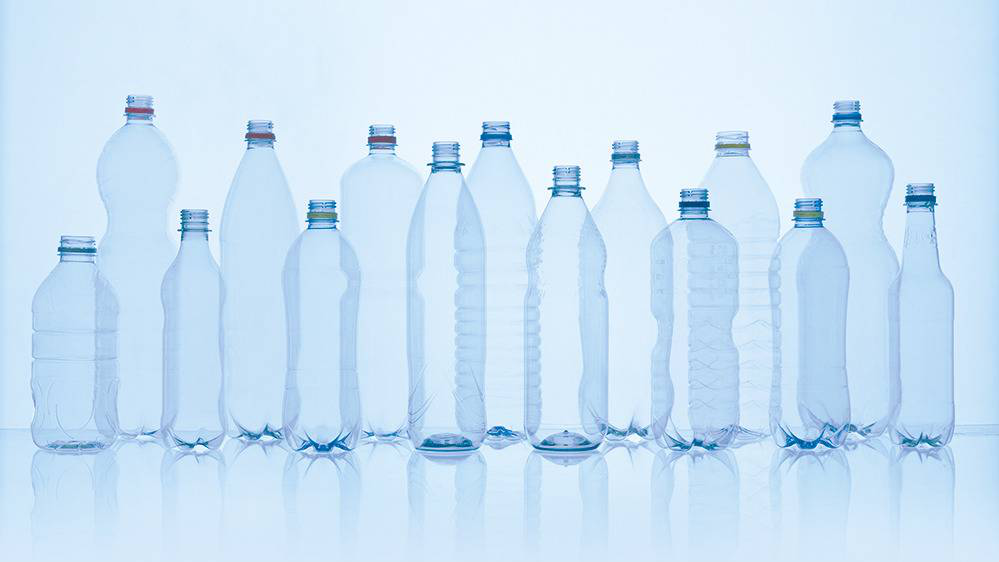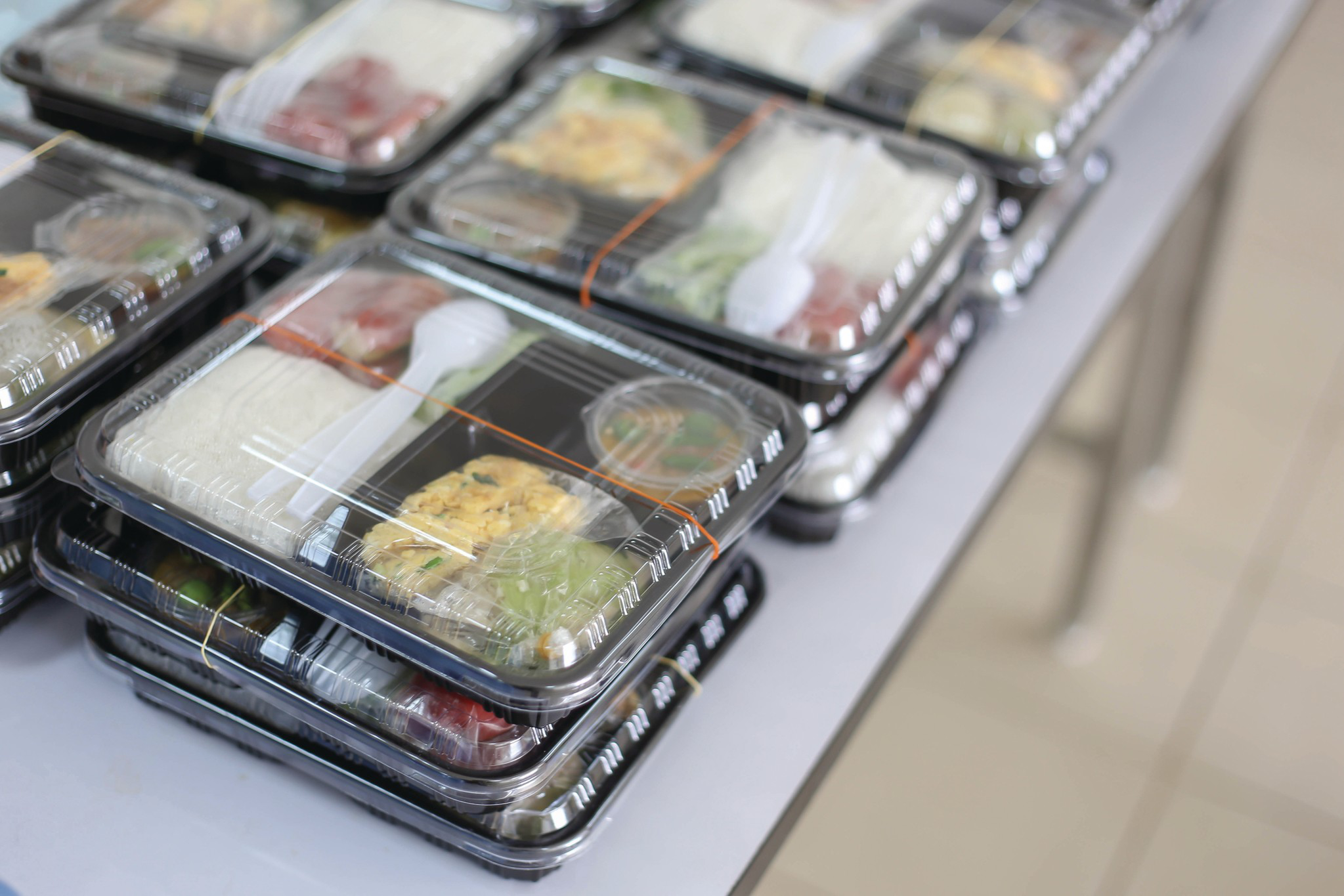Only through efficient and high-quality plastic recycling can we protect nature and the environment for future generations. Here, PET is the absolute pioneer. Almost 100% of PET beverage bottles in Germany are already being recycled today. However, PET trays must also be included for the successful implementation of a circular economy for PET packaging. The possibilities here are far from being fully exploited.
What is polyethylene terephthalate (PET)?
With about 6% share of the total amount of plastics produced, polyethylene terephthalate is one of the most important thermoplastics. Originally, PET was only used for fibers, but today about a quarter of the amount produced is used for packaging and semi-finished products. However, the plastic is most commonly used in food packaging. And for good reason: PET is resistant to oils and fats as well as alcohol and diluted acids. Since it has a very low permeability to aromas, odors, and gases, it optimally protects the packaged food from external influences. PET is airtight and waterproof, easy to shape, extremely durable, and very lightweight. It is currently the most popular plastic for food packaging. The PET symbol on beverage bottles is particularly well-known, as these make up 60% of all PET products according to a study by the German Nature Conservation Association (NABU). PET not only has the great advantage of being 100% recyclable, but it is also one of the plastics that can be processed into a food-grade regranulate as post-consumer material through an appropriate recycling process and thus used again for new food packaging. In Germany, a large part of the recyclers uses the high-quality input quality from the collection of deposit-bearing PET disposable bottles for processing into food-grade material. But less homogeneous and colored PET from the recyclable material collection is also recycled. It is mostly melted down, drawn into fibers, and used in the textile industry for the production of fleece fabrics.

PET beverage bottles
With a recycling rate of 94.1%, the material recycling of PET beverage bottles in Germany is a prime example of a functioning material cycle. This is due in no small part to the very good collection of recyclable materials. According to the study "Generation and Recycling of PET Beverage Bottles in Germany 2019" by gvm, more than 98.7% of all PET beverage bottles are returned through the primary collection systems (single-use and reusable deposit systems and Petcycle) or are collected through the dual systems. The recyclate obtained from recycling is increasingly used in the bottle-to-bottle cycle. As the gvm study shows, more than 37% of the recycled PET material is used to produce new PET bottles – an increase of 5% compared to 2017. This growth is also reflected in the use of recycled material in PET beverage bottles. Today, a PET bottle consists on average of 30% recyclate. This means that the PET industry in Germany already meets the EU Commission's regulations planned for 2030 regarding the use of recyclates in PET beverage bottles.
28.6% of the recycled PET is used for the production of films, and a good 20% is processed into polyester fibers, from which fleece sweaters, softshell jackets, backpacks, and much more are made. The remaining 13.2% of the recycled PET is used in the production of plastic straps, injection molding applications, and non-food bottles, such as detergent or cosmetic bottles.
PET Trays
In addition to PET beverage bottles, PET trays can also be found in the supermarket. A fundamental distinction is made between two types: monolayer trays made of pure PET, e.g., for fruit, meat, and fish, and multilayer trays, consisting of a stable tray and a flexible lid film, e.g., for sausage and cheese. To extend the shelf life of cheese and sausage products, other polymers such as EVOH as an oxygen barrier or, for example, PE as a sealing layer are used in addition to PET. Multilayer trays currently have a market share of 60%. In Germany, PET trays are collected through the Dual Systems and sorted into two groups: on the one hand, into mixed PET with different mixing ratios of transparent PET bottles and other PET items, such as trays. This fraction is usually further sorted to increase the proportion of bottles. The PET trays mainly fall into the category of reject goods. The second fraction consists of 75% PET trays. PET trays are already being recycled in small quantities today. However, they do not become trays again but primarily fibers for the textile industry.
To further advance the recycling of PET trays and particularly promote tray-to-tray recycling, the IK Industrievereinigung Kunststoffverpackungen has established an expert panel. Two large-scale trials conducted by this panel in 2020 demonstrate that PET trays are fundamentally recyclable in the Dual Systems. However, due to strict regulatory requirements, reuse in direct food contact is not possible, even though it is mostly PET recyclate from food trays. Recyclates from PET multilayer applications can also be used again in a tray. The panel sees many opportunities in PET "tray-to-tray" recycling and will continue to work on ensuring that PET tray recyclates can gradually replace the already successfully used PET bottle recyclates.
However, to recycle PET trays in high quality, investments in recycling facilities are necessary. So far, the sorting, washing, and processing processes are explicitly tailored to bottles. It is necessary to retrofit here to achieve correspondingly high-quality rPET qualities from PET trays as well.
Conclusion
PET is the star of plastics when it comes to the circular economy. In Germany, PET beverage bottles already have an extremely high recycling rate. They are almost 100% reused in a closed loop. However, to close the gap in the PET recycling loop, tray-to-tray recycling must also be advanced. All actors in the value chain are called upon here. Processors should save on the use of foreign substances so that the material is as recyclable as possible. Recycling companies need to specifically sort out the trays and invest in necessary technologies for the washing and processing process. Distributors must provide additional components that, wherever possible, are also made of PET. And last but not least, retail must also contribute to further promoting PET. Because, according to the Plastics Industry Association, only if there is enough material in circulation will economic recycling be possible.

